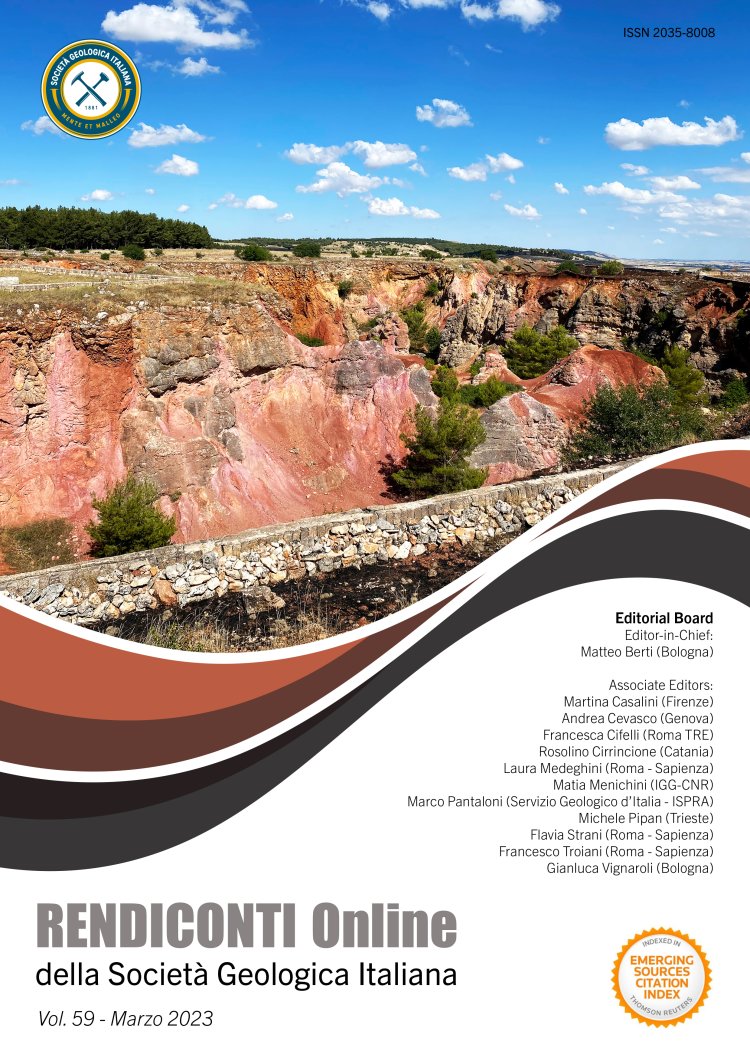
Geochemistry of mudrocks from the Calcare di Base Formation (Catanzaro Basin, Calabria): preliminary data
Francesco Perri1, Rocco Dominici1, Adriano Guido1, Mara Cipriani1 & Giuseppe Cianflone1
1Dipartimento di Biologia, Ecologia e Scienze della Terra, Università della Calabria, 87036 Arcavacata di Rende (CS), Italy.
Corresponding author e-mail: francesco.perri@unical.it
Volume: 59/2023
Pages: 71-74
Abstract
The Messinian Salinity Crisis (MSC) occurred in the Mediterranean area during the late Miocene, between two glacial stages with a strong tectonic activity characterized by paleoclimate variations (alternated dry and warm/humid period). The geochemical composition of mudrocks of the Calcare di Base Formation (Catanzaro Basin, Calabria) was studied using X-Ray Flurescence. The data reveals that the Si, Ti, Al, Na, K, Mn and P concentrations are generally depleted relative to values of the PAAS (Post- Archaean Australian Shales). In particular, Na, K and Al depletions are probably due to the paucity/absence of feldspars and clay minerals. The relationships between the mobile and immobile elements indicate a weak- moderate source area(s) weathering environments with a paleoclimate characterized by persistent dry and warm/arid conditions alternating with relatively wet conditions. The geochemical proxies of the studied samples based on elemental ratios suggest a provenance from a mainly felsic source such as the rocks composed the Sila Massif.
Keywords
Get Full Text